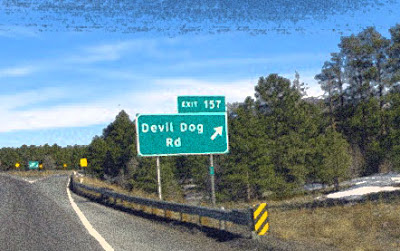Dead and Buried: House of the Spirits
Ancient Indian Proverb:
“Treat the earth well. It was not given to you by your parents; it was loaned to you by your children. We do not inherit the Earth from our Ancestors; we borrow it from our Children.”
For thousands of years, tucked in the mountains or scattered amongst the desolate dirt floors of the southwest desert, Indian ruins of ancient civilizations can be found. These past inhabitants left their partially ruin structures, pottery shards, painted rocks, and tools leaving us to speculate how they were able to survive the harsh desert. The Sinagua, Salado, and Hohokam Indians were amongst the Native Americans that once thrived around the 12th century and then mysteriously disappeared in the vast desert wasteland.
Besh Ba-Gowah:
A 700 year old Salado Indian ruins on the outskirts of Globe, AZ. The name Besh Ba-Gowah comes from the Apache language and means, “place of metal” or “metal camp”. The narrow passages throughout the ruins served as a defense mechanism against enemies or other dangers to those who lived there. Each structure is made of heavy stones, two stories with storage on the bottom and each family living in the upper level. It is believed the Salado Indians were a highly developed group of people with remarkable abilities to create utensils, decorative pottery and colorful cotton cloths. What really happened to the Salado remains a mystery to this day.
Montezuma Castle:
For over 400 years, the Sinagua people lived in a dwelling tucked in the red rocks in the Verde Valley near Sedona, AZ. The dwelling was made of limestone and located about 100 feet above Oat Creek. The Sinagua were hunters, gatherers, artisans and also disappeared mysteriously.
Tuzigoot:
Another place where the Sinagua people lived was on a hilltop between Sedona and Jerome, AZ. Tuzigoot, which means “crooked water”, is made of massive cobblestone and were uneven two story dwellings. Like the Montezuma Castle Sinagua people, they were highly skilled. They constructed many canals for irrigation for their entire crop. They also vanished without a trace like the other Native American people.
Hohokam:
Back in 200 B.C. until around 1450, the Hohokam people lived in the south-central area of the Arizona. From the Hohokam ruins which have been unearthed, we can see they were skilled group of farmers who built elaborate canals that went on for miles. They grew corn, beans, squash, agave, and cotton for clothing and other uses to protect themselves from the harsh environment. They were hunters, fishermen, and used the desert materials to build their homes. What happened to the Hohokam? Some stories say they went back to Mexico because Arizona was too hard on them, and other stories say they split up into different tribes. Perhaps the answers are in the many petroglyphs left on the stones in various places throughout the state.
More of those Indian proverbs:
Crazy Horse – “A very great vision is needed and the man who has it must follow it as the eagle seeks the deepest blue of the sky.”
Hopi – “Don’t be afraid to cry. It will free your mind of sorrowful thoughts.”
Apache – “It is better to have less thunder in the mouth and more lightning in the hand.”
Blackfoot – “Those that lie down with dogs, get up with fleas.”








There is nothing as eloquent as a rattlesnakes tail. - Navajo
ReplyDeleteLooks like a place I'd like to go. Heat instead of low-clouds and fog. Very interesting.
ReplyDeleteAUGH!!! I SO want to see th ose sights!!!!!
ReplyDelete~shoes~
Very well put, Barry.
ReplyDeleteMatt & Red Shoes, those places are much better in person. I love the Native American history.
Montezuma's Castle is really cool! I'd love to get up there and walk around inside. I'm pretty sure they don't let people in though. I don't even know what the access point would be. I'm always impressed with the heights at which some of these structures were built. It took guts just to get to your house.
ReplyDeleteGreat post!
John
Alright, it's official. You need your own TV show. I'm calling the Travel Channel, demanding that they execute Zak Bagans, and forcing them to offer you a contract. Well, I would if I could, anyway. Seriously, I love reading your research.
ReplyDeleteJohn, when I was young we were able to go inside the ruins. They had a path leading up there. But, because of the structure deteriorating, they had to stop it. From what I can remember, it was an awesome view from up there.
ReplyDeleteABeerfhShower, thanks! Sharon (Autumnforest) and I have talked about how cool it would be to have a TV show, take people around the southwest to the many abandoned sites and small towns giving the history and showing what it looks like today.
I'm fascinated by these stories of Native American communities simply disappearing without trace. It's so mysterious! There's a lot of wisdom in those quotes, too!!
ReplyDelete